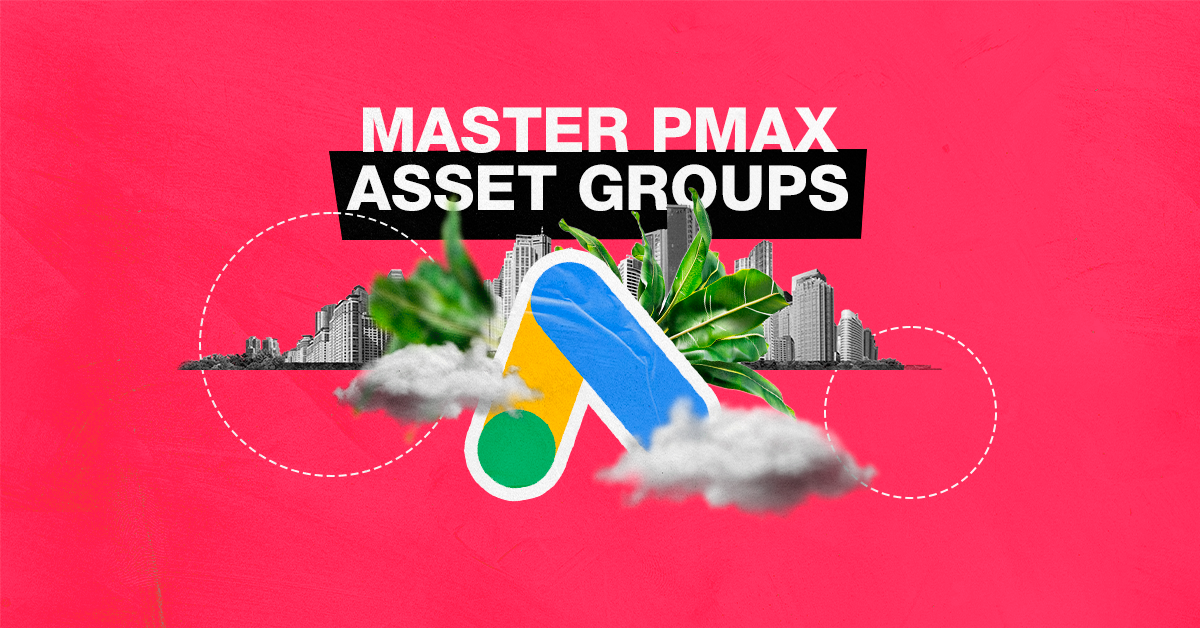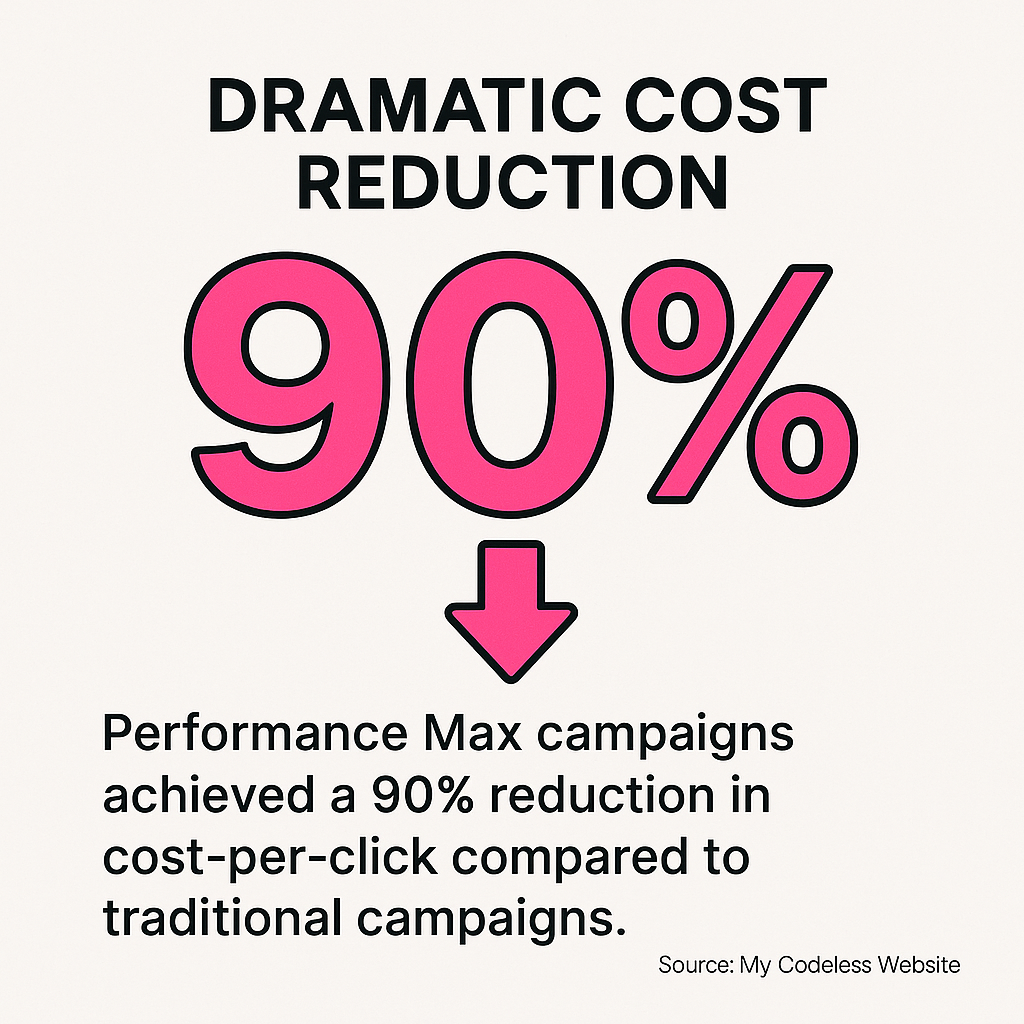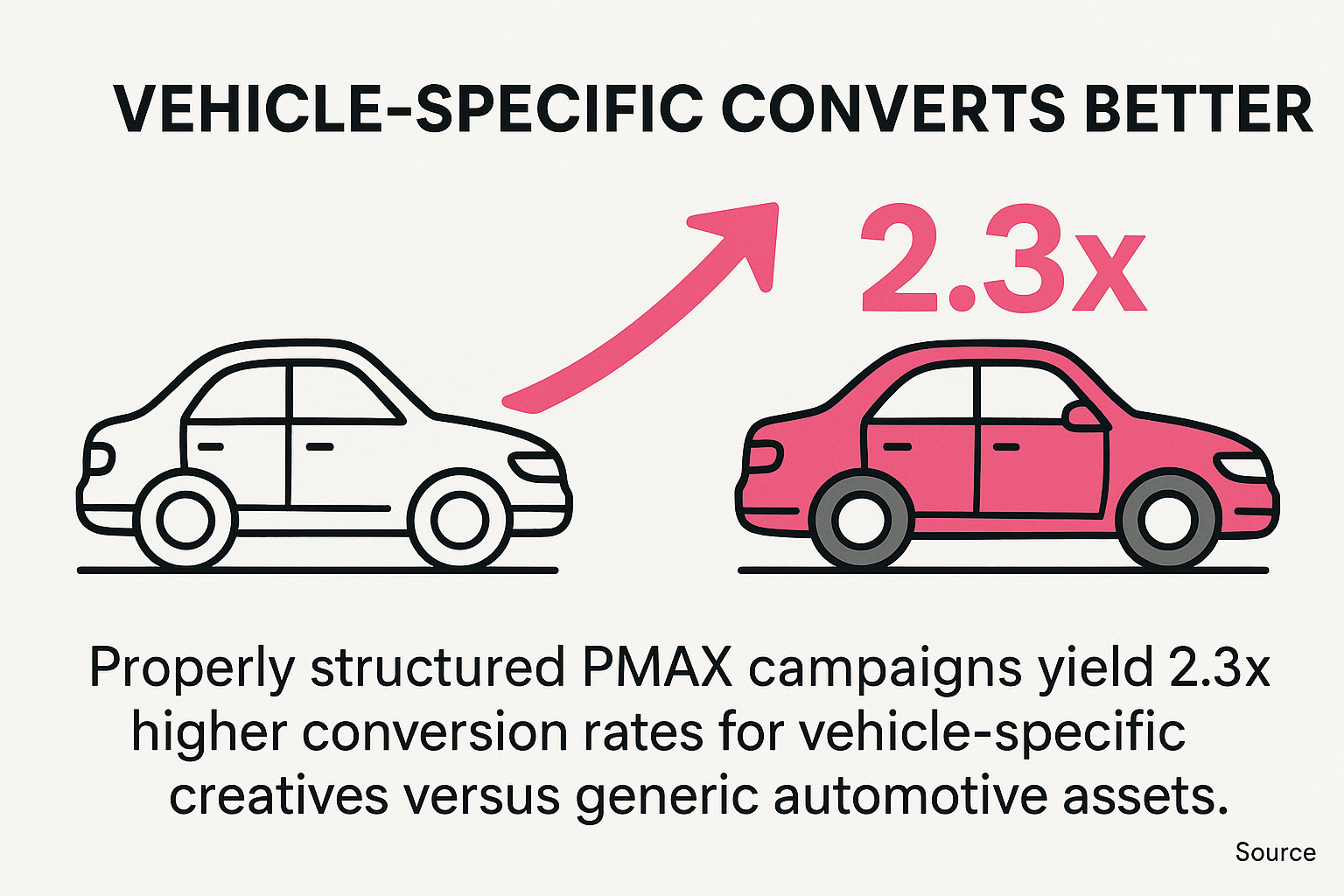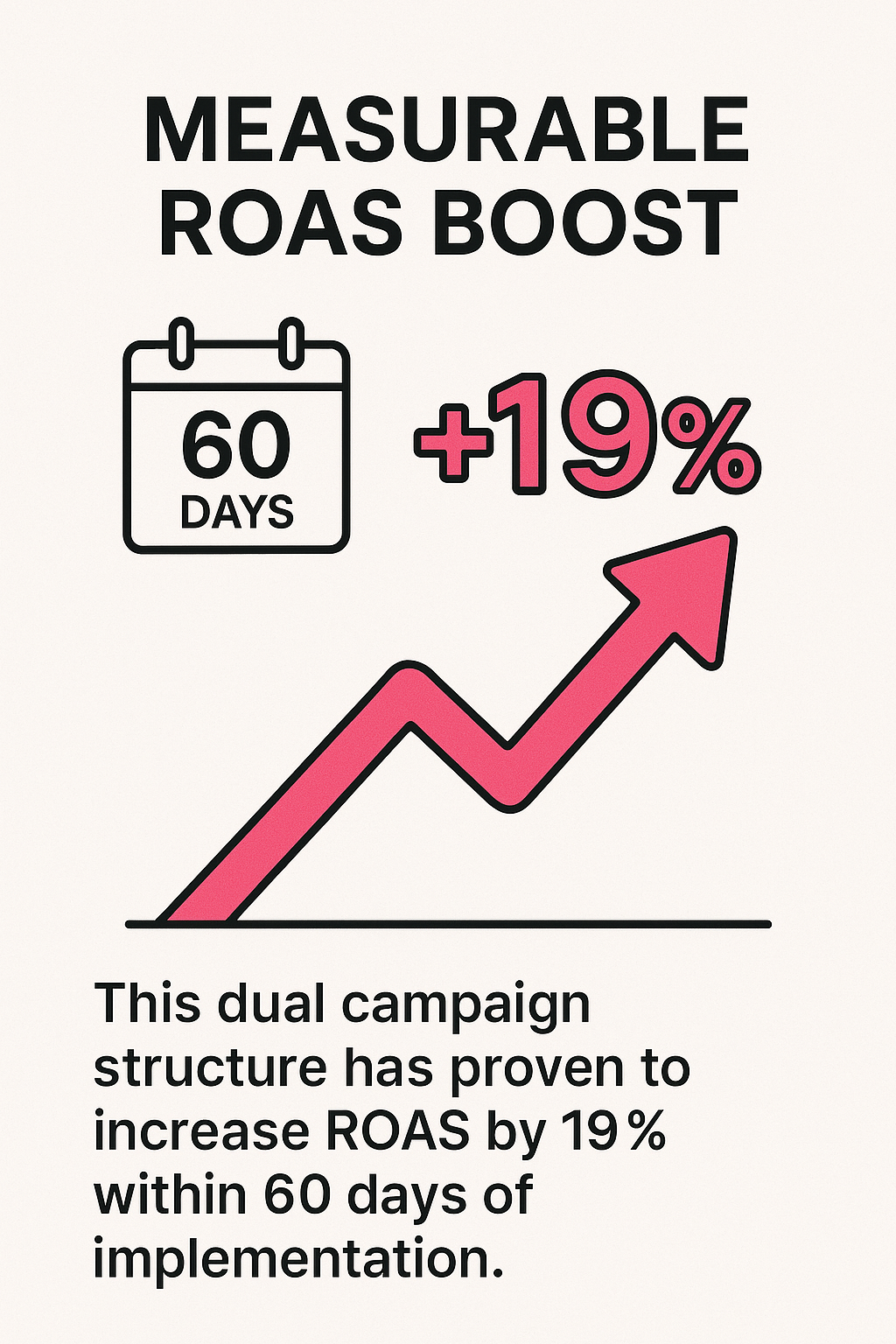
As an eCommerce PPC agency owner who's helped numerous automotive parts retailers boost their online sales, I've witnessed firsthand how Performance Max campaigns can transform results when structured correctly. But here's the thing about selling auto parts online: what works for general eCommerce often falls flat in the specialized world of automotive.
The unique challenges of the auto parts industry—fitment data, technical specifications, and vehicle compatibility—require a tailored approach to Performance Max that most guides simply don't cover. That's exactly what we're addressing today.
If you're managing PMAX campaigns for auto parts, you're probably wondering how to organize your asset groups for maximum impact. Should you group by part type? By vehicle? By brand? And what assets actually drive conversions for auto parts shoppers?
In this guide, I'll walk you through proven strategies that have helped our auto parts clients achieve remarkable results, including a 90% reduction in cost-per-click compared to traditional campaigns. (Source: My Codeless Website)

Performance Max represents Google's shift toward automation and machine learning. For auto parts retailers specifically, it offers unique advantages that address industry-specific challenges—particularly the complexity of matching the right parts to the right vehicles and buyers.
Auto parts retailers face distinct challenges in digital advertising. Shoppers search with highly specific queries that include year, make, model, and part specifications. They need absolute certainty about compatibility before purchasing. PMAX excels at connecting these specific searches with your products when properly configured.

The data shows properly structured PMAX campaigns yield 2.3x higher conversion rates for vehicle-specific creatives versus generic automotive assets.
|
Performance Metric
|
PMAX Improvement
|
Notes
|
|---|---|---|
|
Cost Per Click (CPC)
|
90% reduction
|
Compared to traditional campaigns
|
|
Cost Per Acquisition (CPA)
|
67-75% lower
|
Across various auto parts categories
|
|
Conversion Rate
|
2.3x higher
|
For vehicle-specific vs. generic assets
|
|
ROAS Improvement
|
19% increase
|
Within first 60 days of optimization
|
These performance improvements don't happen automatically. They require a strategic approach to campaign structure, asset creation, and data integration that aligns with how auto parts customers shop.
The foundation of successful PMAX campaigns for auto parts lies in proper campaign and asset group structure. Unlike general eCommerce where you might group products by category or price point, auto parts require a more nuanced approach.
One of the most effective strategies we've implemented is separating feed-only and full PMAX campaigns. This approach prevents generic assets from diluting inventory-specific relevance and allows for more targeted messaging.
Based on extensive testing with our auto parts clients, I've found that implementing a dual-campaign structure significantly improves performance for most auto parts retailers. Here's how to structure it:
|
Campaign Type
|
Purpose
|
Key Features
|
|---|---|---|
|
Feed-Only PMAX
|
Lower-funnel inventory ads
|
Merchant Center feed only, no additional assets
|
|
Full PMAX
|
Upper-funnel branding & education
|
All creative assets + feed
|

This dual structure has proven to increase ROAS by 19% within 60 days of implementation.
The feed-only campaign works exceptionally well for auto parts because it allows Google's algorithm to focus exclusively on matching specific part numbers and fitment data with relevant searches. Meanwhile, the full PMAX campaign can focus on broader category education, brand building, and reaching shoppers earlier in their journey.
Within your campaigns, organizing asset groups requires careful consideration. For most auto parts retailers, I recommend creating asset groups based on a combination of part category and vehicle compatibility.
When organizing your asset groups, consider these primary approaches:
For most of our clients, vehicle-specific asset groups perform best for aftermarket parts with clear fitment requirements, while category-based groups work well for universal parts and accessories.
Creating high-performing assets for auto parts requires an understanding of what motivates parts shoppers. Unlike fashion or electronics buyers, auto parts customers are primarily driven by compatibility, reliability, and technical specifications.
The research shows you should provide 15-20 high-quality images, 3-5 videos, 5 logos, and 10+ headlines/descriptions covering fitment, brand, pricing, and urgency for optimal PMAX performance in the auto parts sector.
When creating image assets for auto parts PMAX campaigns, focus on these high-converting image types:
|
Image Type
|
Best Practices
|
Conversion Impact
|
|---|---|---|
|
Product on White Background
|
Clean, detailed shots from multiple angles
|
Essential baseline
|
|
Installation Context
|
Part shown installed on vehicle
|
High - confirms fit and appearance
|
|
Technical Diagrams
|
Show measurements and connection points
|
High - reduces uncertainty
|
|
Before/After
|
Especially effective for visual upgrades
|
Very high for performance/appearance parts
|
|
Vehicle-Specific Imagery
|
Show part on specific make/model
|
Highest - confirms exact fitment
|
For maximum impact, include a mix of these image types, with particular emphasis on vehicle-specific installation images. Our data shows that customers are significantly more likely to purchase when they can see the part installed on their specific make and model.
If you sell universal parts that fit multiple vehicles, consider creating separate assets showing the part installed on popular applications. This extra effort pays dividends in conversion rates.
Video assets create a significant competitive advantage in auto parts marketing. While many retailers skip videos entirely, our clients who incorporate these types of video content see substantially higher engagement:
Videos don't need to be elaborate productions. Even simple smartphone videos showing installation or unboxing can dramatically improve performance compared to having no video assets at all.
Headlines and descriptions for auto parts require a technical yet approachable tone that builds confidence in compatibility and quality. Your text assets should follow these guidelines:
Headlines must explicitly mention vehicle compatibility (e.g., "2018 F-150 Brake Pads" rather than "High-Performance Brake Pads"). This direct approach significantly improves relevance and click-through rates.
For descriptions, focus on these key elements:
1. Technical specifications - Materials, dimensions, OE reference numbers
2. Compatibility details - Specific years, makes, models, engines, trims
3. Performance benefits - Durability, performance improvements, warranty
4. Installation information - Difficulty level, special tools needed, time required
5. Social proof - Ratings, reviews, or certifications
When creating text assets for Google Shopping campaigns, remember that specificity outperforms generality every time in the auto parts industry.
The secret weapon for auto parts retailers in PMAX campaigns is proper data integration. This is where you can create a significant competitive advantage through technical optimization that most competitors miss.
Embedding ACES (Aftermarket Catalog Exchange Standard) and PIES (Product Information Exchange Standard) data in your product feeds enables dynamic ad generation based on vehicle fitment data. These industry-standard formats allow you to maintain comprehensive vehicle compatibility information that Google's algorithms can leverage.
Here's how to leverage these standards in your PMAX campaigns:
|
Data Standard
|
Key Fields to Include
|
Implementation Benefit
|
|---|---|---|
|
ACES
|
Year/Make/Model/Submodel, Engine, Trim
|
Precise vehicle compatibility matching
|
|
PIES
|
Part Type, Brand, GTIN, MPN, Hazardous Material
|
Complete product specifications
|
|
Custom Attributes
|
Installation Difficulty, Performance Gain, OE Replacement
|
Enhanced shopper qualification
|
Integrating these data standards requires technical implementation, but the performance improvements justify the investment. When your product feed contains structured vehicle compatibility data, Google can automatically match your products to highly specific searches like "2015 Toyota Camry V6 brake pads" with much greater accuracy.
For many of our clients, implementing robust inventory management systems that support these standards has been a prerequisite for PMAX success.
Beyond the standard data fields, including these granular attributes dramatically improves PMAX performance:
1. Part numbers - OEM references, cross-references, manufacturer numbers
2. Vehicle fitment - Year/make/model/trim/engine compatibility
3. Technical specifications - Dimensions, materials, specifications
4. Installation details - Difficulty ratings, special tools required
5. Warranty information - Duration and coverage details
6. Certification/compliance - DOT, CARB, SAE certifications
Each of these attributes helps Google match your products to the right searches and qualify potential buyers before they click, improving your conversion rates and reducing wasted ad spend.
Different types of auto parts require different marketing approaches. Based on our experience managing PMAX campaigns across various auto parts categories, we've developed specialized strategies for each major category.
Emergency parts like batteries, alternators, and other critical components that cause vehicle non-operation require a distinct approach focused on availability and speed.
For emergency parts, emphasize availability and fast shipping. Research shows using "24/7 Availability" in 70% of headlines significantly improves performance for these urgent-need categories.
Key optimization strategies for emergency parts include:
|
Element
|
Best Practice
|
Example
|
|---|---|---|
|
Headlines
|
Emphasize speed, availability, reliability
|
"In Stock: 2018 Accord Alternator - Same Day Shipping"
|
|
Images
|
Show clear product + installation points
|
Close-up of mounting brackets and connections
|
|
Descriptions
|
Focus on quality, warranty, easy installation
|
"OE-quality replacement with lifetime warranty"
|
|
Bidding
|
Higher bids justified by urgency
|
Maximize Conversions with higher target CPA
|
For these emergency categories, availability messaging often outperforms price messaging, as customers prioritize getting their vehicle operational quickly over finding the absolute lowest price.
Performance parts like intakes, exhausts, and engine components benefit from a more technical, results-focused approach.
For performance parts categories, feature dyno-test videos and highlight horsepower gains in descriptions. Technical specifications and proven performance improvements drive conversions in this category.
Effective PMAX strategies for performance parts include:
1. Focus on gains - Quantify performance improvements whenever possible
2. Technical credibility - Show engineering details and testing results
3. Visual results - Before/after videos demonstrating improvements
4. Installation context - Show the part installed on popular performance vehicles
5. Enthusiast language - Use terminology that resonates with performance enthusiasts
Performance parts shoppers typically conduct more research and comparison shopping than emergency replacement buyers. Your assets should support this decision-making process with substantive technical information.
I've seen this approach work particularly well when combined with strategic remarketing campaigns that nurture these high-consideration purchases.
Keeping your PMAX assets fresh is particularly important in the auto parts industry, where seasonal factors, new vehicle models, and evolving customer preferences impact performance.
Our research indicates you should refresh approximately 30% of your assets quarterly based on top-performing vehicle segments and seasonal demand patterns (e.g., AC components in summer).
Different auto parts categories experience significant seasonal fluctuations in demand. Aligning your asset refresh strategy with these patterns can substantially improve performance:
|
Season
|
Focus Categories
|
Asset Refresh Priority
|
|---|---|---|
|
Spring
|
Detailing products, wiper blades, AC parts
|
Highlight restoration, visibility, comfort
|
|
Summer
|
Performance parts, cooling systems, tires
|
Feature performance gains, reliability in heat
|
|
Fall
|
Lighting, batteries, wiper blades
|
Emphasize visibility, cold-weather reliability
|
|
Winter
|
Heating systems, batteries, emergency kits
|
Focus on safety, reliability in harsh conditions
|
By proactively refreshing assets aligned with these seasonal patterns, you can get ahead of demand curves and capture market share before competitors.
Beyond seasonal refreshes, continuously monitor asset performance to identify high and low performers. Google's asset reporting in PMAX provides ratings from "Low" to "Best," but I recommend going deeper with these strategies:
1. Vehicle segment analysis - Identify which vehicle makes/models drive the most conversions and create more assets for these segments
2. Asset combination insights - Look for patterns in which image + text combinations perform best
3. Competitive monitoring - Regularly review competitor listings to identify new messaging trends
4. Customer review mining - Analyze customer reviews for language and features to highlight in new assets
The auto parts market evolves quickly as new vehicle models enter the repair sweet spot (typically 4-7 years old). Staying current with vehicle population trends ensures your assets remain relevant to market demand.
For deeper analysis capabilities, consider enhancing your product feed with additional custom labels that allow for more granular performance tracking.
Appropriate bidding strategies for auto parts PMAX campaigns should evolve with the age and data accumulation of your campaigns. Based on our experience with numerous auto parts retailers, we've developed a phase-based approach to bidding.
For new accounts or when launching PMAX for the first time, start with "Maximize Conversions" for 30-45 days. This allows Google's algorithm to gather essential baseline data about which products, audiences, and placements perform best for your specific inventory.
During this initial phase, focus on:
1. Asset quality - Provide the full range of recommended assets
2. Broad coverage - Include your full product inventory
3. Data collection - Don't make major changes during the learning phase
4. Budget flexibility - Allow sufficient budget for learning
While it may be tempting to impose tight restrictions immediately, this learning phase is crucial for long-term success. Consider it an investment in campaign intelligence that will pay dividends later.
After the initial learning phase, transition to Target ROAS bidding with benchmarks calibrated to your specific product categories. Our client data suggests these ROAS targets as starting points:
|
Product Category
|
Recommended Target ROAS
|
Price Point Consideration
|
|---|---|---|
|
Brake Components
|
400-500%
|
Lower for premium, higher for economy
|
|
Filters & Maintenance
|
400-500%
|
Higher volume, competitive category
|
|
Performance Parts
|
250-350%
|
Higher price point, more consideration
|
|
Body & Appearance
|
300-400%
|
Visual impact matters in assets
|
|
Electrical Components
|
350-450%
|
Technical compatibility focus
|
These target ROAS ranges should be adjusted based on your margins, price points, and competitive position. Premium brands can often sustain lower ROAS targets than economy options while maintaining profitability.
One key insight we've discovered is that value-based bidding works exceptionally well for auto parts retailers with varied price points. This approach allows Google to bid more aggressively on higher-ticket items that justify the increased acquisition cost.
Beyond the standard metrics like ROAS, CPA, and conversion rate, auto parts retailers should track several industry-specific indicators to fully evaluate PMAX performance.
Track conversion rates and ROAS by vehicle type to identify your most profitable segments. This requires proper tagging and Google Analytics configuration, but provides invaluable insights for future inventory and marketing decisions.
Key metrics to monitor include:
1. Make/model conversion rates - Which vehicles convert best?
2. Vehicle age performance - Which model years drive most revenue?
3. Cross-selling success - Which parts are frequently purchased together?
4. Vehicle-specific AOV - Do certain makes/models spend more?
These insights help you refine both your inventory purchasing decisions and your marketing strategy. For example, you might discover that while Ford F-150 parts drive the most traffic, BMW 3-Series parts actually convert at a higher rate and justify more inventory investment.
For multi-channel sellers, I recommend implementing proper analytics tracking to understand how PMAX campaigns influence sales through other channels.
The true value of an auto parts customer often extends beyond the initial purchase. When evaluating PMAX performance, consider these longer-term metrics:
1. Repeat purchase rate - Do PMAX-acquired customers return?
2. Customer lifetime value - How does PMAX customer LTV compare to other channels?
3. Category expansion - Do customers buy across multiple categories over time?
4. Seasonal repurchase - Do customers return for seasonal needs?
Incorporating these longer-term metrics into your performance evaluation may justify higher initial acquisition costs for certain customer segments that demonstrate stronger retention and lifetime value.

Performance Max represents a significant opportunity for auto parts retailers who approach it with industry-specific strategies. The unique nature of automotive parts—with their technical specifications, fitment requirements, and specialized audiences—demands a customized approach that goes beyond standard PMAX practices.
By implementing the strategies outlined in this guide—from proper campaign structure and asset group organization to vehicle-specific assets and data integration—you can achieve the impressive performance improvements we've seen across our auto parts clients.
Remember that PMAX success requires continuous optimization and adaptation. The automotive market evolves constantly with new vehicle models, changing repair trends, and seasonal demands. Your PMAX strategy should evolve accordingly.
If you're looking to implement these strategies but need expert guidance, our team specializes in automotive eCommerce and can help you build high-performance PMAX campaigns specifically tailored to your auto parts inventory.
What aspects of Performance Max for auto parts are you finding most challenging? I'd love to hear about your experiences in the comments.
Our customers value boutique agency approach with access to a seasoned team, profit-based goals, and clear communication.



